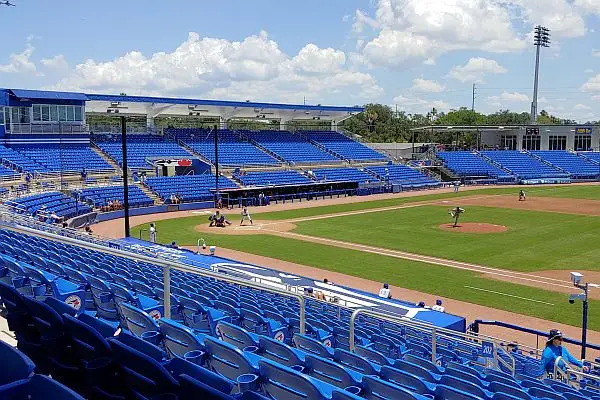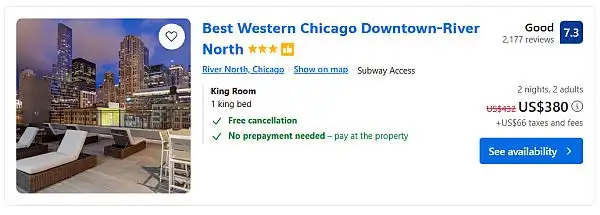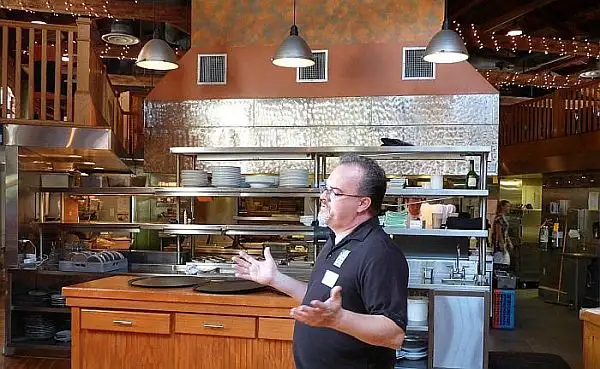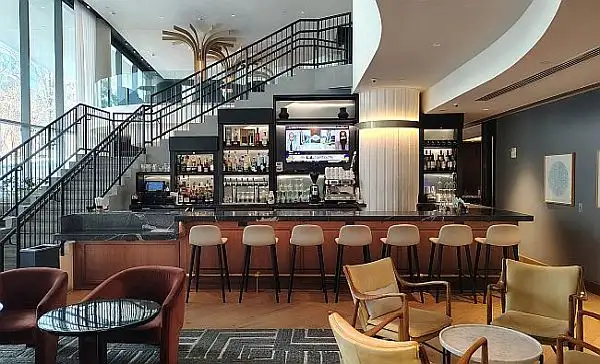One of the themes of this blog and a whole book I published once is that the best way to make your travel dollars worth a fortune is to be a contrarian traveler. When the sheep are all headed to one place, take the other path to an alternate spot with smaller crowds. While you can spend a fortune in some American cities, there are hundreds of affordable vacation spots in the US that have plenty to enjoy.

You can go read about NYC, D.C., and San Francisco in a million places, so I don’t tend to cover them much. When I cover USA travel on here or at the Perceptive Travel Blog, I tend to focus on the places that don’t get so much press. Because they’re not marquee destinations, the prices tend to be a lot more reasonable in these lesser-known destinations. They’re also places where nobody is talking about overtourism, especially this year when Canadians and Europeans are avoiding the whole country.
These days there are very few places where you can’t find plenty to do, with more options than you’ll have time to enjoy. Every U.S. state has stepped up its attention on tourism the past few decades as it realizes this is a good way to bring in revenue and jobs without having to lure in a bunch of big companies. The same with towns and cities.
I’ve gushed before about places all over the USA that may not be anywhere near the top of your list, but have plenty to offer. This is especially true for families since almost every city of any size has a whole array of things for them to do. Unlike the really crowded national parks everyone has heard of and the cities like Orlando that seemingly every foreigner wants to visit, these aren’t destinations with long lines and packed parking lots. The really great appeal of these places though as it relates to this blog is…they’re pretty cheap.
Cheap doesn’t have to mean boring, however. Following are some ideas on how to plan a trip to a cheaper secondary destination and still make it a memorable US vacation.
Pick a Place Based on Your Passions

Even if you set a criteria like, “Places I can drive to within four hours,” that’s still going to be a long list of options. If you let your passions be your guide though, it’ll be much easier to narrow the list down. Is there a band you love that’s going to be in the area? Browse event tickets for festivals, shows, and more for acts that get you excited and maybe you’ll catch them in a place you’ve never been before. If you’re on Spotify you’re probably getting notifications for concert dates if there’s a band you listen to a lot. Look for a secondary city where lodging is reasonable and build your trip around the event.
If you’re into sports, maybe go where you can check out a minor league baseball game where concession prices are family-friendly, or a college basketball game for a team that’s never in the Final Four. Or do you have to go somewhere hours away for your kid’s swim meet or little league game? Instead of driving back, how about staying on a couple of nights and checking out what’s worth seeing in the area?
It’s easy to see how this would play out if you’re into theater, architecture, amusement parks, or hiking. On my Perceptive Travel site, we’ve got a piece from a New York City writer who went to Morehead, Kentucky to check out folk art. I spent a chunk of my time in Billings, Cody, and Flagstaff checking out the local craft beer scene.
Pick a place based on what you love and build your trip around that.
Let Local Deals Be Your Guide
I’m going to be in Palm Springs, California soon, which is certainly no bargain. One day we’re going to head over to Temecula wine country though and do some tastings with a picnic. We won’t just show up and pay the list price though. We’re going to get a deal on Groupon that makes it quite reasonable.
You have probably browsed Groupon for your own city, but you can search on activities anywhere you’re headed and find good deals. Family activities, romantic excursions, and adventure thrills are all on there in abundance.
Don’t forget about the best price of all: free. Almost anywhere you go there are going to be free activities and attractions if you do a little digging around. The less popular the place, the more of them there will probably be. The North Dakota Tourism site lists 35 free things to do, Omaha Tourism lists 20, Rochester NY Tourism lists 20, and on it goes.
Rates First, Location Second

One way to narrow down your list and find a US vacation spot that won’t break your budget is to run the numbers. If you’re going to fly somewhere, use Google Flights and leave the destination blank. See what comes up as a terrific deal. (Just remember to go to Allegiant and Southwest too if they fly from your airport: they’re usually not listed on third-party booking sites.)
If you’re driving, do some random checks for towns and cities within driving distance on the hotel booking sites like Expedia and Booking or check Airbnb if you’re planning to go for a week. For instance, while the price of a poorly rated Best Western hotel in Chicago will set you back $223 per night over 4th of July weekend, in Grand Rapids the Best Western is $132 per night and in Omaha the same chain is $125 per night on that same holiday weekend.
If you’re a camper or have an RV (or are thinking about renting one), then check out the state park sites and campgrounds. Unless you’re staying with relatives or doing a home exchange, lodging will probably be your biggest expense, so start with that. Then check out prices for local attractions you’re interested in, like regional amusement parks, the children’s museum, or art museums.
Restaurant prices don’t vary radically once you get outside the biggest cities, but maybe check out prices for a local food tour or something else that’s a window into the area. Seek out local places with great reviews that aren’t going to break the bank. Then it’ll be an experience, not just a refueling. If there’s a local farmer’s market, pick up some things there, especially if you’re staying somewhere with a kitchen.

On my food tour in Greenville, SC
If you invest some time in research, you’ll find that secondary locations have plenty to offer but just aren’t as well-known to draw the crowds. I’ve never been to North Dakota, for instance, but if I lived in the Midwest and could drive there, I could find plenty to enjoy for a week-long summer vacation.
I’d do some hiking and biking on one of the 13 North Dakota trails for both. I would hike some of the 25 miles through the Badlands and then go biking on the 140-mile Maah Daah Hey Trail. Besides the great name, it’s got places to camp and lots of wildlife viewing options in the grasslands. If you’re a serious cyclist, there’s a 400-mile loop trip each August and probably not a lot of traffic for most of it. And I’d probably take a canoe or kayak trip somewhere.
I wouldn’t have to lay out a lot of money for any of this. Park fees are $7 per car and you can rent a fat tire bike, kayak, or paddleboard for $8 an hour. You can rent a fishing boat for the day at a state park for $125-$150. Camping fees are $15-$30 a night depending on whether you need electricity, cabins are $55 to $125 (the latter sleeps six). At Lake Metigoshe or Cross Ranch State Park, you can stay in a yurt! It’s $70-$85 a night and sleeps 3 to 5 depending on which one.

If you play your cards right–credit cards that is–you might not pay anything for lodging. Because of my IHG card, I stayed at this nice Kimpton pictured above for $0 when I was visiting my daughter in Atlanta because of my IHG credit card. I’ve gotten free stays in Richmond, Boca Raton, and Houston because of my Amex Hilton Surpass. The sign-up bonuses alone will set you up for a long weekend’s worth of lodging.
Just remember, avoiding the crowds and high summer vacation prices is easy if you go beyond the obvious and keep your options open. Spend a little time researching and you’re sure to find plenty of affordable vacation spots in the US.



